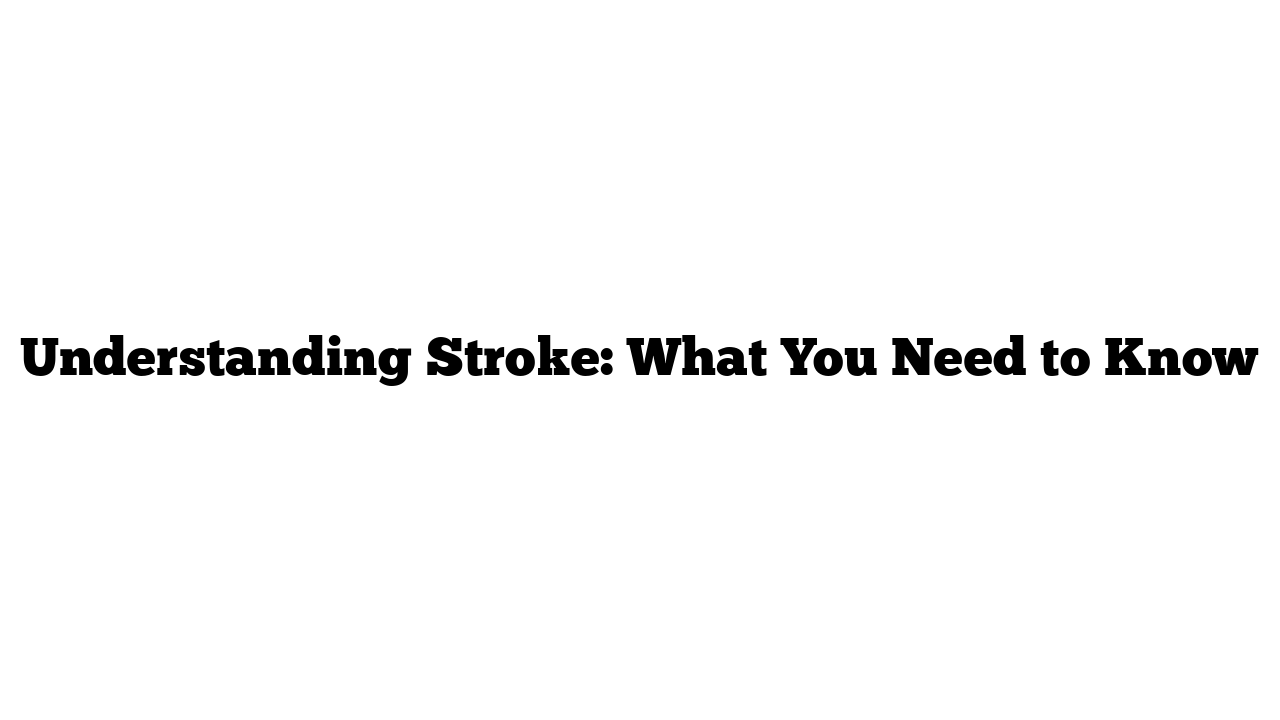Hello! In this article, we want to talk to you about a serious medical condition: stroke. The term might sound a bit odd—it’s not related to tennis strokes, swimming strokes, or brush strokes. Instead, the word “stroke” comes from the idea of receiving a sudden “strike” or “blow,” reflecting how abruptly this condition can appear. Did you know that every year, more than 15 million people worldwide experience a stroke? Of these, five million die, and another five million are left with disabilities. While strokes mostly affect people over the age of 65, they can strike younger individuals as well.
What is a Stroke?
So, what exactly is a stroke? The brain, like all parts of the body, requires oxygen, which it receives from the blood. A stroke occurs when blood flow to the brain is interrupted. When brain cells are deprived of oxygen, they become damaged, leading to the symptoms we recognize as a stroke. Because the brain controls the entire body, the effects of a stroke can vary widely depending on which areas of the brain are affected.
For example:
- If a stroke impacts the area controlling facial muscles, it may cause a drooping face.
- A stroke affecting the part of the brain related to movement could lead to weakness in the arms or legs.
- If the area responsible for speech is affected, the person may have difficulty speaking.
Other potential symptoms include changes in vision, loss of balance, confusion, and memory loss. While some effects may be barely noticeable, many strokes result in severe and disabling consequences.
Getting Help FAST
Quick action is crucial when it comes to strokes. If you suspect someone is having a stroke, remember to act FAST:
- F (Face): Is their face drooping on one side? Can they smile?
- A (Arms): Is there weakness in the arms? Can they lift both arms?
- S (Speech): Is their speech slurred?
- T (Time): If you notice any of these signs, it’s time to call an ambulance immediately.
Upon arrival at the hospital, doctors will assess the patient and perform an urgent scan to determine where the brain is damaged and identify the type of stroke.
Types of Stroke
Strokes are categorized into two main types, based on issues with the blood vessels supplying the brain:
- Ischaemic Stroke: This type occurs when a blood vessel becomes blocked, preventing blood flow to the brain. This blockage can result from a buildup of fatty material, leading to a clot, similar to a heart attack. The clot may form within the brain or travel from other areas of the body, commonly from the neck or heart. If detected early, a “clot-busting” medication called thrombolysis can be administered to dissolve the clot. If thrombolysis isn’t an option, other medications like aspirin may be prescribed.
- Haemorrhagic Stroke: This type occurs when a blood vessel bursts, causing blood to leak into or around the brain. The accumulated blood can lead to swelling, which may necessitate surgical intervention in some cases.
Sometimes, stroke symptoms can completely resolve within 24 hours. This is known as a mini-stroke or Transient Ischemic Attack (TIA). Even if symptoms are brief, it’s critical to seek medical attention immediately, as a TIA is a warning sign of a higher risk for a full stroke.
Stroke Rehabilitation
The effects of a stroke can be life-changing, but with time and rehabilitation, the brain can adapt and recover some lost abilities. Rehabilitation may involve various specialists, including:
- Dieticians: To recommend special diets or feeding tubes for those with swallowing difficulties.
- Speech and Language Therapists: To assist with communication challenges.
- Physiotherapists and Occupational Therapists: To offer exercises and adaptations for daily living tasks.
- Counselors: To help address feelings of frustration and dependency that may arise after a stroke.
Preventing Strokes
We’ve covered a lot about strokes, but what can we do to prevent them? Here are some important steps to reduce the risk of having a stroke:
- Manage High Blood Pressure: It’s the leading cause of strokes.
- Quit Smoking: Stopping tobacco use significantly lowers risk.
- Control Cholesterol Levels: Keeping cholesterol in check is crucial.
- Stay Active: Regular physical activity is beneficial for overall health.
- Eat a Healthy Diet: Focus on whole foods and limit processed and high-sugar foods.
- Limit Alcohol Intake: Stay within recommended guidelines.
- Control Diabetes: Maintain good blood sugar levels if you have diabetes.
In this HealthSketch, we’ve discussed what a stroke is, how to spot the key symptoms and the urgency of acting FAST. We’ve also covered treatment options, rehabilitation, and preventative measures. We hope this information helps you and those around you!
